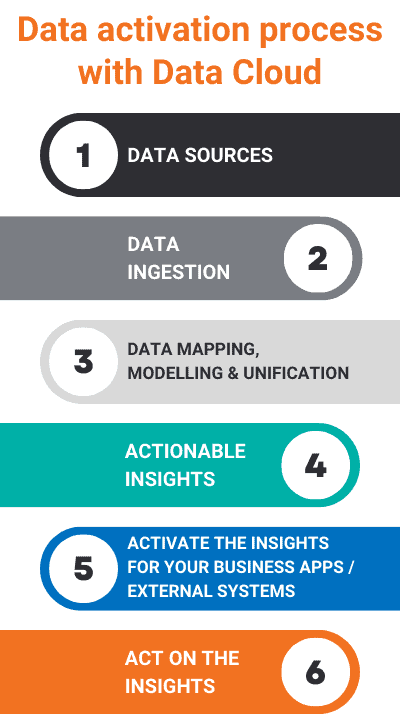Technology
Mar 09, 2023
The Magic of Salesforce Data Cloud: Five Reasons Why It’s the Best CDP

Salesforce’s Customer Data Platform (CDP), now known as Salesforce Data Cloud) connects customer data across all channels and helps you understand where your prospects and customers are in their journeys.
In this blog post, Salesforce Solutions Consultant, Priyanka Taunk, explores the key features of Salesforce Data Cloud, giving her top five reasons why it’s the best CDP on the market.
After recently obtaining the Salesforce Data Cloud accreditation, I quickly spotted the key areas where the tool stands out. The features I’ve highlighted in this blog post help address some key challenges organisations face when it comes to gaining a single source of customer data and being able to use it across the business.
1. Constant and automated data ingestion – at scale! No matter how many data points, external business systems, or the volume of data, Salesforce Data Cloud lets you ingest all your data into one place. This is constantly updated as your customers interact with you. The ease of ingesting data from different sources and systems into Data Cloud stands out – it’s so seamless and simple… And all with clicks and no code!
2. Data Cloud makes it easy to activate data and insights in your target business applications, providing unified data in the necessary formats for external systems and applications. This allows you to seamlessly create personalised experiences for your customersBy unifying your data into customer profiles (steps 2 and 3 of the graphic), Data Cloud generates actionable insights (step 4) that can be sent back to your business applications or third-party ecosystems to use (step 5). In short, Data Cloud does the magic for you!

Data activation process in Data Cloud: 5 steps
3. The out-of-the-box data models are built on common use cases, speeding up time to value. For businesses with in-house or custom data models, Salesforce Data Cloud allows you to align with your current data structures and address any gaps, offering a hybrid approach between custom & out-of-the-box.
4. Salesforce Data Cloud empowers your teams to gain better insights into both potential and existing customer data. It gathers data from various sources and systems. Then it identifies new audiences to engage with, as well as opportunities for upselling to existing customers. Your teams can finally work with unified customer profiles and the common data sets sitting within – creating a single source of truth for your customer data!
5. The built-in intelligence from Einstein AI combined with the Data Cloud capabilities make for an even more compelling offering. It leverages a wider range of data, enabling businesses to establish relevant automations directly using real-time insights.
If you’re looking to join the dots across all your channels, understand where your prospects and customers are in their journeys, make better decisions faster, and keep all data in one place, Salesforce Data Cloud is the right choice for you.
Download the guide below.
Contact Us
Ready to achieve your vision? We're here to help.
We'd love to start a conversation. Fill out the form and we'll connect you with the right person.
Searching for a new career?
View job openings